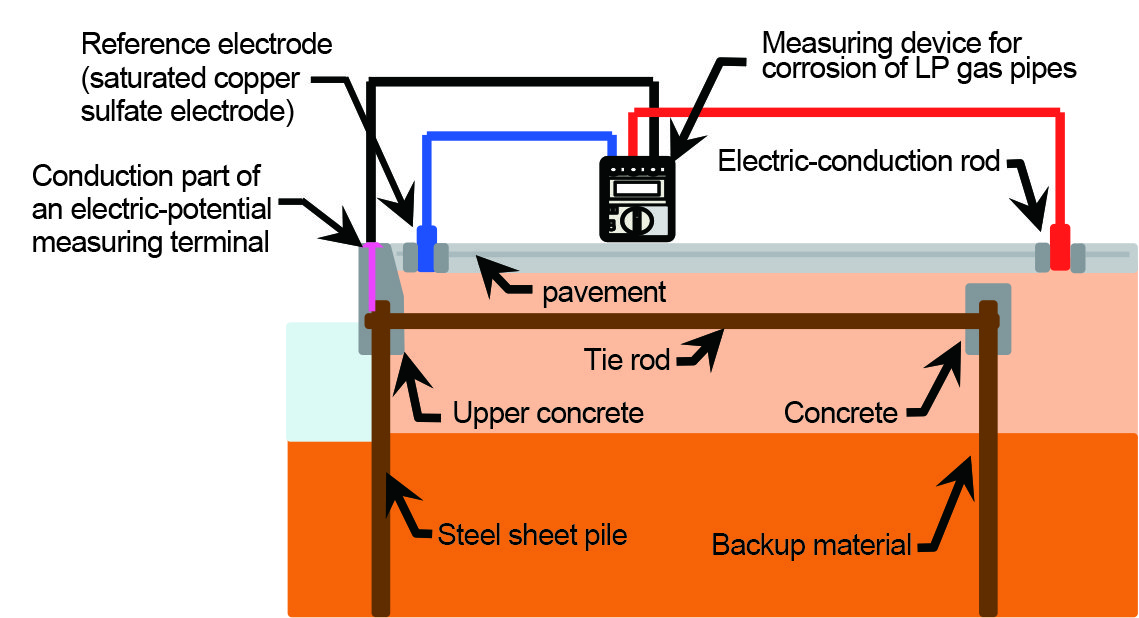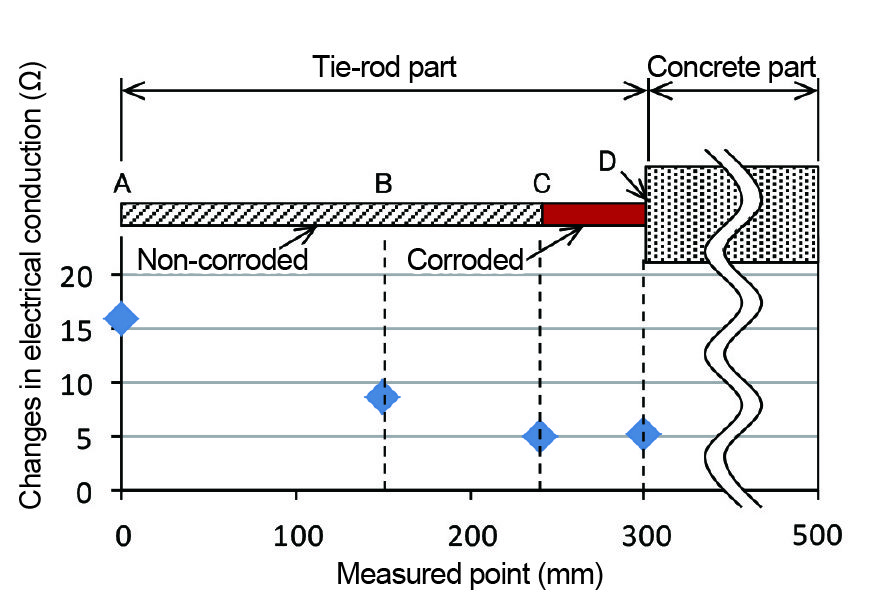Major Research Development of a corrosion diagnosing techniques for tie rods at sheet pile-type mooring wharves using an electrochemical method
As a method of inspecting tie rods at sheet pile-type mooring wharves, there is currently only one method in which the use of facilities is stopped and then apron areas are excavated. However, surveys using this method require time and effort, and so few inspections of tie rods have been conducted. Therefore, in this study, we aimed to propose a nondestructive-inspection method for tie rods without excavation of apron areas.
In an inspection of LP gas pipes which are buried in the ground, electrochemical nondestructive inspections are conducted to determine the presence of corrosion. In this research, we conducted indoor experiments using model specimens, and on-site experiments at sheet pile-type mooring wharves, to investigate whether this method can be applied to tie rods.
The results of the indoor experiments indicated that the method can be used to estimate the locations of corrosion by comparing the changes in electrical conduction between measurement points. However, in on-site experiments, we confirmed that changes in electrical conduction at measurement points markedly vary depending on ground conditions and water contents in earth-covered areas, and that the dispersion of flowing current to other areas than tie rods hinders the accurate measurement of changes in electrical conduction.
Regarding application of the inspection method for LP-gas pipes to tie rods, many challenges remain for the diagnosis of tie-rod corrosion: proposal of a method to assess electrical resistivity in earth-covered areas; a method of assessing changes in electrical conduction which takes flowing-current dispersion into account; and appropriate thresholds of changes in electrical conduction.

Inspection of tie rods

Changes in electrical conduction value in a simulated test specimen



